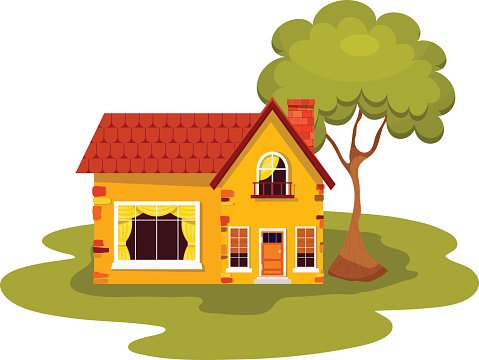Loan Estimate
A loan estimate is a form that a lender issues to a loan applicant after you apply for a mortgage to communicate how much they can expect to pay for the loan if both parties agree to move forward with it.
The contents and format of the loan estimate forms are the same regardless of the lender. It contains estimates of the loan amount, interest rate, monthly payment, closing costs, and other loan charges, and is three pages long.

How does a loan estimate work?
When you need to borrow, you need to approach multiple lenders and carry out several loan payment calculations as you shop for a home loan. Getting a home loan estimate will help you evaluate each mortgage’s cost and compare them with other mortgages so that you can select the one that fits your financial needs. When you have an estimation in hand from one lender, you will negotiate for better estimates with another lender. It will be easier for you to request things such as a lower interest rate and better mortgage terms.
A lender will send you a loan estimate within three days after receiving a mortgage application form before they approve or decline your loan request. When comparing several home loan estimates, ensure they have similar general features, the same type of interest rate, fixed vs. adjustable, and, preferably, similar issuance dates. The interest rate can change daily, so it would be better to avoid getting your estimates a few days apart to avoid any impacts on your quoted costs. There are the sections and individual items that appear in the loan estimate form and their interpretations. Here is what you will expect to find in the document:
Loan Terms
This is a critical section found on the first page of the estimate form that shows your principal loan amount. It also shows the interest rate you will be charged to borrow the money, the estimated monthly principal, and interest payment. It also indicates whether you will need to pay a prepayment penalty fee for paying off your loan before the expiry of the loan term or a balloon payment at the end of the loan term. Ensure that the total loan amount plus your down payment are the same as the sale price.
Projected Payments
This is also found on the first page. It shows details of your expected monthly mortgage payment over the life of your loan. The amount is supposed to include principal amount and interest, property taxes, escrow charges, and homeowners insurance. Evaluate yourself and find out whether you can comfortably incorporate the amount into your monthly budget.
Costs at Closing
This section is still on the first page showing the cumulative closing costs you might need to pay. The amount includes prepaid insurance, appraisal fees, and title insurance, and the total amount you might need to bring to the closing table, plus your down payment. Ensure that you have enough funds to take care of closing costs upfront.
Loan Costs
Loan charges are usually on the second page. You expect to find the costs that come with underwriting, originating and processing of your loan. These expenses are included in your closing costs and cash-to-close numbers.
Below the loan costs section, you will find a list of “Services You Cannot Shop For” and “Services You Can Shop For.” The most important part is the “Services You Can Shop For,” which you need to pay close attention to since it might include pest inspection, the survey fee, and the costs of obtaining the property title. Please call up providers of these services independently to negotiate and ask for better deals than what is shown on paper and potentially offset your moving or furniture costs.
Other Costs
You will also find things that your lender or title company does not control on the second page. These include charges such as taxes, transfer fees, prepaid interest, and homeowners insurance. These amounts add to your closing costs and cash-to-close totals.
Calculating Cash to Close
Still, on the second page of the form, you will see details of the total amount of your loan costs, down payment, any seller credits, your deposit, and other loan adjustments.
Comparisons
This section is on the third page of the form where you can compare different loan offers in terms of principal versus interest and other fee totals you will have paid off in five years. The section also shows the annual percentage rate and the total interest rate. The latter shows the amount of interest you will have to pay over the entire loan term shown as a percentage of your home loan amount.
Other Considerations
Lastly, on the third page, you will find details about your loan terms, including the late payment, refinancing, and whether the lender has any plans to service your loan or transfer servicing. Be sure to carefully read and understand these terms since they change from one lender to another.
Pro tip: several loan estimates give you more bargaining power for better terms with any lender, and you can always go back to a lender to ask for a better mortgage estimate.
How Can You Get a Loan Estimate?
Your mortgage provider will send you a loan estimate after receiving the following necessary information showing:
- Your official name
- Your monthly income
- Your social Security number which the lender will use to obtain your credit report.
- The property address and location
- The estimated value of the property you intend to purchase
- The desired loan amount
To get a more precise loan estimate, you might need to provide extra information, like your desired loan type, such as conventional or FHA loan, and down payment amount.
Remember that a loan estimate is not a closing disclosure, so if the terms on offer are not appealing to you do not need to take any action. However, suppose you like the terms offered in a particular loan estimate and want to go ahead; in that case, you must immediately send to the lender a notification known as your “intent to proceed,” or your agreement to proceed with the loan application. Lenders are obliged to honor the terms of a loan estimate for only ten business days. Once you express your intent to proceed, your lender will ask you to provide more information regarding your finances e.g., your income, to send you a closing disclosure to show your final loan costs.
What Is a Closing Disclosure?
A closing disclosure is a document you receive after selecting a lender and sending your intent to proceed with the mortgage underwriting process. The form gives similar information as the loan estimate, although in the final details. This indicates that it includes the locked-in costs of your loan and the specific amount you will be required to make at closing.
The document is sent to you three days prior to your scheduled loan closing date. This allows you time to go through the form to check for any changes. Take the time to compare your closing disclosure with the loan estimate you had earlier on received.
Loan Estimate vs. Closing Disclosure
Avoid confusing a loan estimate with a closing disclosure, a longer and more detailed document that shows the actual costs you will need to pay when closing on the mortgage. However, it is crucial to compare the disclosure with the original loan estimate that the lender sent you to ensure consistency and accuracy.
A loan estimate is only three pages, while a closing disclosure contains five pages. A loan estimate is provided to give you a projection of the costs you can expect with the possible loan. This means that it is subject to change. A closing disclosure shows your selected loan’s final terms. It includes the loan amount and interest rate, monthly payment, closing costs, and amounts of down payment and prepaid insurance, interest, and taxes. It will also indicate any credits you will receive from the seller.
With a loan estimate, the lender will ask only for some little information. With the closing disclosure, you will need to provide a finalized sales contract and a fully processed loan application.
A lender issues a loan estimate within three days after receiving your application and the necessary information. Your lender will send it to you at least three days before the planned closing date with a closing disclosure.
What Can Lead to a 3-Day Closing Delay?
Sometimes a significant revision and modifications on the loan estimate can occur leasing to a new three-day review. However, changes such as the charges of a real estate agent’s commission, the amount paid to escrow, or adjustments to prorated payments for taxes, utilities, and the like do not qualify for a delay. The 72-hour clock can only change when:
- The loan option changes, for instance, shifting from a fixed-rate to an adjustable-rate loan or an interest-only mortgage
- The APR increases by more than one-eighth of an annual percentage rate for fixed-rate loans or more than one-quarter of a percentage point for adjustable-rate mortgages.
- A prepayment penalty is added to the loan terms.

The Consumer Financial Protection Bureau
The consumer financial protection bureau ensures that the consumer financial market works for responsible lenders, consumers, and the entire economy. The CFPB works to empower, educate, and enforce.
